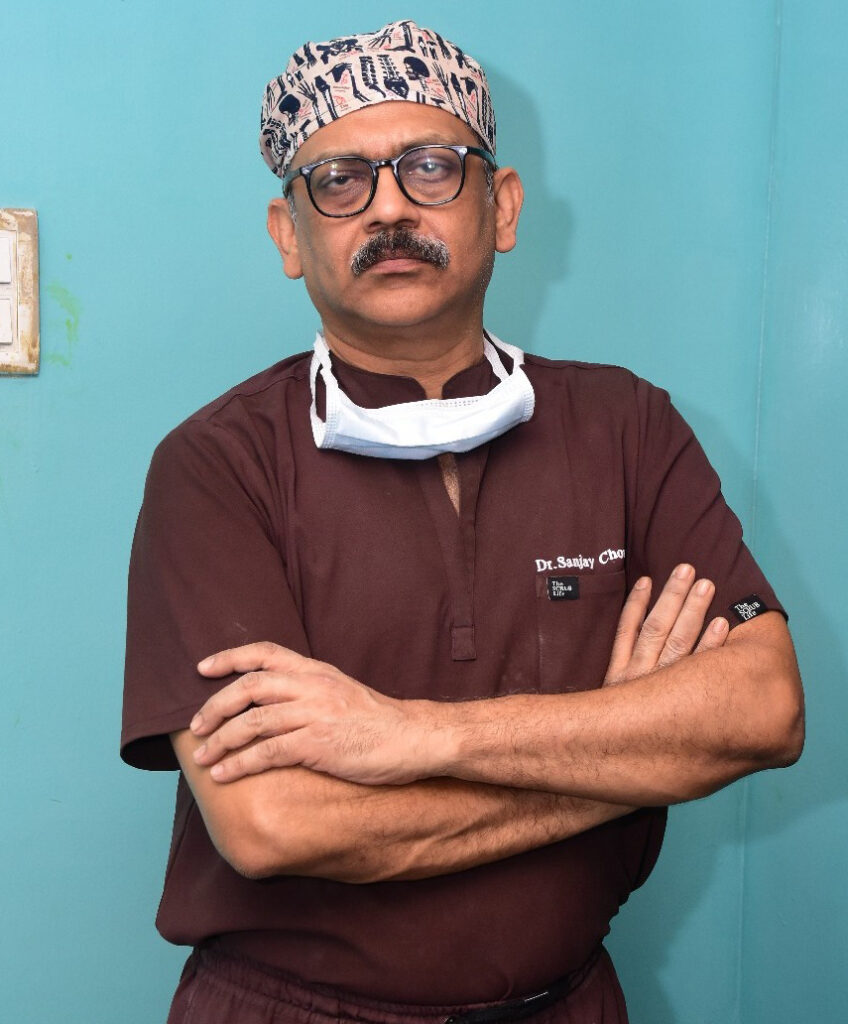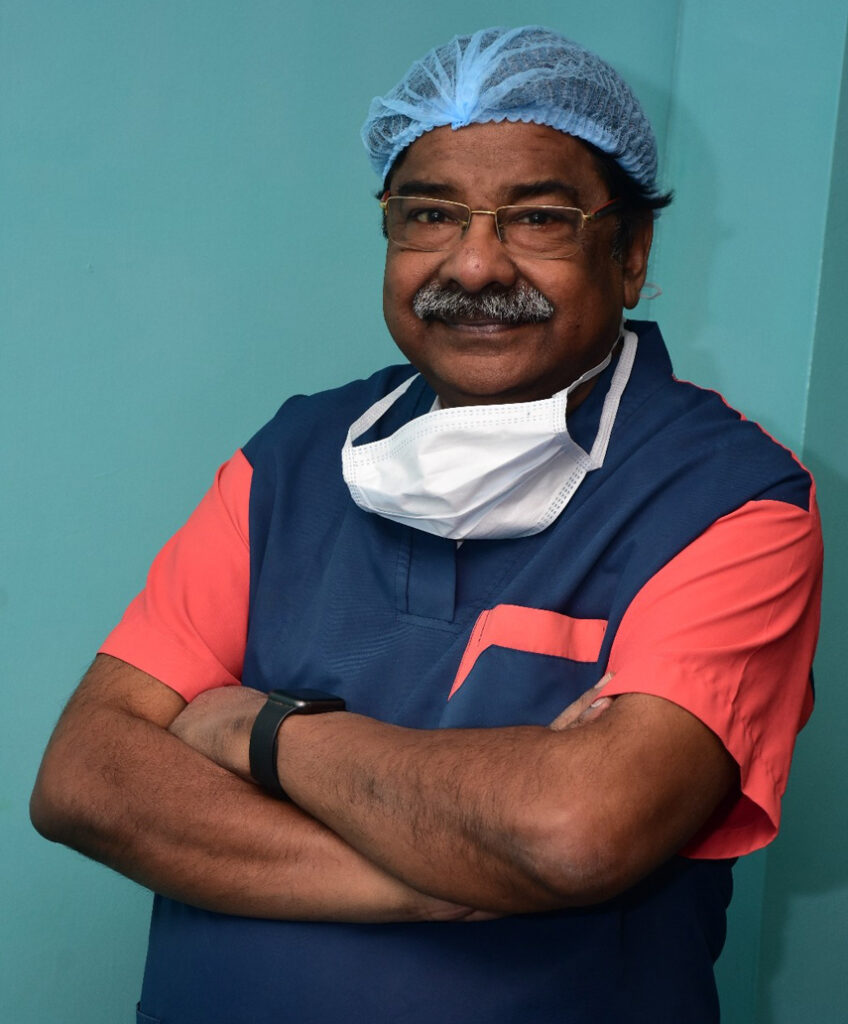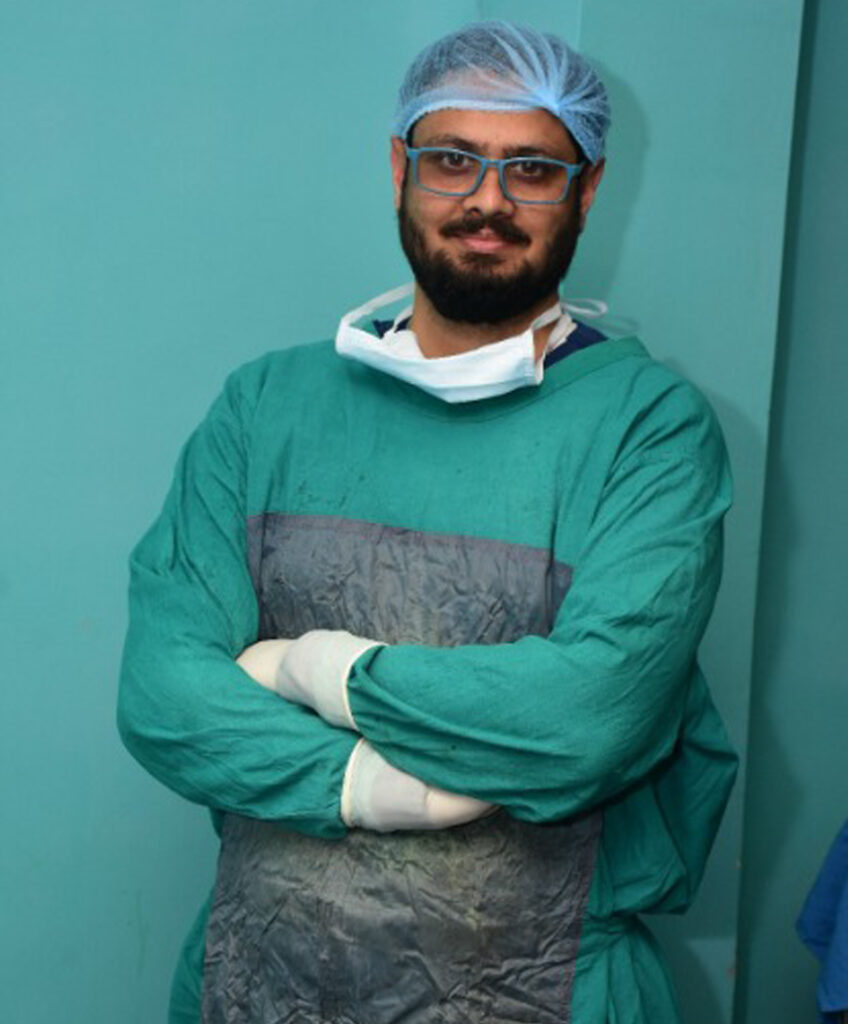Doctor Desk

Dr. Sanjay Choudhary
Dr. Sanjay Choudhary MBBS (Hons.) MS (ortho) MCH did his MBBS from Patna Medical College Patna, Joined Sawai ManSingh Medical College, Jaipur. He did his MS in orthopedics. He has been practicing neglected Complex Trauma Reconstruction of Hand Trauma from 1998. He has vast experience in dealing cases of neglected complex TRAUMA, He has worked in HAND SURGERY Unit of SMS Hospital Jaipur. He has special interest in reconstruction of HAND TRAUMA. He regularly attends International & National Conferences & Workshop, so that the treatment at Dhanbad is at-par with best in world.
He is member of
1. Indian Orthopedic Association.
2. Trauma Society of India.
3. Rajasthan Orthopedic Association.
4. Central Zone Orthopedic Association.
5. Indian Arthroscopy Society.
6. Member AO Trauma Foundation.
7. Jharkhand Orthopedic Association.
8. Bihar Orthopedic Association.
He has done basic and advanced courses in Joint Replacement & Trauma.
CALL
0326-2313723

Why Choose Us?
Akriti Orthopadic team is experienced in complex Trauma, Joint Replacement besides routine Trauma management.
World class facilities at your doorstep. To provide quality orthopedic care, implants, Operation Theater which is available in metro corporate hospitals at affordable rates.
- Ligament Injuries: Tears in the anterior cruciate ligament (ACL), posterior cruciate ligament (PCL), or collateral ligaments can result from sudden stops, twists, or impacts.
- Meniscus Tears: The meniscus can tear due to twisting or direct trauma, often seen in sports activities.
- Fractures: Breaks in the bones of the knee, particularly the patella, can occur from falls or direct blows.
- Dislocation: The knee joint can become dislocated due to trauma.
Osteoarthritis is a degenerative joint disease characterized by the breakdown of cartilage, the flexible tissue that cushions the ends of bones in the joints. As the cartilage deteriorates, bones begin to rub against each other, leading to pain, swelling, stiffness, and reduced joint mobility.
Key Features of Osteoarthritis
Cartilage Degradation:
- The smooth cartilage that covers and protects the ends of bones gradually wears away.
- This loss of cartilage leads to friction between bones, causing pain and discomfort.
Bone Changes:
- The bones may develop growths called bone spurs (osteophytes).
- The joint space can become narrower, further limiting movement.
Synovial Fluid Changes:
- The synovial fluid, which lubricates the joints, may become less effective, exacerbating joint stiffness and pain.
Common Symptoms
- Pain: Often worsens with activity and improves with rest.
- Stiffness: Most noticeable upon waking up or after periods of inactivity.
- Swelling: May occur due to inflammation in the joint.
- Reduced Flexibility: Difficulty in moving the joint through its full range of motion.
- Grinding Sensation: A feeling of grating or catching in the joint.
Commonly Affected Joints
- Knees
- Hips
- Hands (especially the base of the thumb and the finger joints)
- Spine (particularly the lower back and neck)
Risk Factors
- Age: Risk increases with age, particularly after 50.
- Gender: Women are more likely to develop osteoarthritis, especially after menopause.
- Genetics: Family history can play a role.
- Obesity: Excess weight adds stress to weight-bearing joints like the knees and hips.
- Joint Injuries: Previous injuries can increase the risk of developing osteoarthritis.
- Repetitive Stress: Occupations or activities that involve repetitive joint use can contribute.
Management and Treatment
- Medications: Pain relievers, anti-inflammatory drugs, and topical treatments.
- Physical Therapy: Exercises to strengthen muscles around the joint and improve flexibility.
- Lifestyle Modifications: Weight management, low-impact exercises, and joint protection techniques.
- Assistive Devices: Braces, shoe inserts, or walking aids to reduce joint stress.
- Surgery: In severe cases, joint replacement or repair surgeries may be necessary.
Osteoarthritis is a chronic condition, but with proper management and treatment, individuals can maintain a good quality of life and manage their symptoms effectively.
Yes, you can apply heat or ice during an injury, but it's important to know when to use each to maximize their benefits:
Ice (Cold Therapy)
When to Use:
- Immediately After Injury: Within the first 48 hours of an acute injury, such as a sprain, strain, or bruise.
- Inflammation and Swelling: To reduce swelling, inflammation, and numb pain.
How to Use:
- Apply an ice pack wrapped in a thin towel to the injured area for 15-20 minutes.
- Repeat every 1-2 hours as needed.
- Avoid direct contact with the skin to prevent frostbite.
Heat (Thermotherapy)
When to Use:
- After 48 Hours: Once the initial swelling has subsided, heat can help to relax and loosen tissues and stimulate blood flow to the area.
- Chronic Pain or Stiffness: For muscle stiffness, chronic pain, or before engaging in physical activity.
How to Use:
- Apply a warm towel, heating pad, or warm bath to the affected area.
- Use heat for 15-20 minutes at a time.
- Ensure the heat source is warm, not hot, to avoid burns.
General Guidelines:
- Do Not Use Ice: If you have circulatory problems, on areas with poor circulation, or before physical activity.
- Do Not Use Heat: On acute injuries where swelling is present, as it can increase inflammation.
- Combination Therapy: Sometimes alternating between ice and heat can be beneficial, especially for injuries like back pain. Start with ice for the first 24-48 hours, then switch to heat.
Always consult with a healthcare professional for advice tailored to your specific injury and condition.
A complete bone fracture is a type of bone break where the bone is entirely separated into two or more distinct pieces. This means the fracture goes through the full thickness of the bone, completely disrupting its continuity.
Total Knee Replacement Surgery, also known as total knee arthroplasty, is a medical procedure in which a damaged or diseased knee joint is replaced with artificial components. This surgery is typically recommended for individuals with severe knee damage due to conditions like osteoarthritis, rheumatoid arthritis, or traumatic injury.
Procedure Overview:
Anesthesia: The patient is given anesthesia, either general (making them sleep through the surgery) or spinal/epidural (numbing the lower body).
Incision: The surgeon makes an incision over the knee to access the joint.
Removal of Damaged Tissue: Damaged cartilage and bone are removed from the surface of the knee joint.
Implant Placement: The removed areas are replaced with metal and plastic components that recreate the surface of the joint. These implants may be cemented or press-fitted into the bone.
Closure: The incision is closed with stitches or staples, and a bandage is applied.
Recovery:
- Hospital Stay: Typically, patients stay in the hospital for a few days.
- Physical Therapy: Rehabilitation starts soon after surgery to improve mobility and strengthen the knee.
- Full Recovery: It may take several months to fully recover, with improvements in pain and function continuing over time.
Benefits:
- Relief from chronic pain
- Improved joint function and mobility
- Enhanced quality of life
Total Knee Replacement Surgery is generally considered when other treatments like medication, physical therapy, or less invasive procedures have not provided sufficient relief.
Joint replacement surgery, also known as arthroplasty, is a medical procedure in which a damaged or diseased joint is removed and replaced with an artificial implant. This surgery is commonly performed to relieve pain and restore function in joints severely affected by conditions such as osteoarthritis, rheumatoid arthritis, or trauma.
Meet Our Doctors
Akriti Orthopadic team is experienced in complex Trauma.

Dr. Sanjay Choudhary
MBBS (Hons.) MS (ortho) MCH
- Phone:+1 (859) 254-6589
- Email:[email protected]

Dr Animesh Priya
Specialised in General
- Phone:+1 (859) 254-6589
- Email:[email protected]

Dr Gaurav Patodia
plastic surgeon
- Phone:+1 (859) 254-6589
- Email:[email protected]
Our associate TPA
Akriti Clinic offers seamless TPA facilities, ensuring hassle-free insurance claim processing. Patients benefit from efficient and streamlined services, making their healthcare






